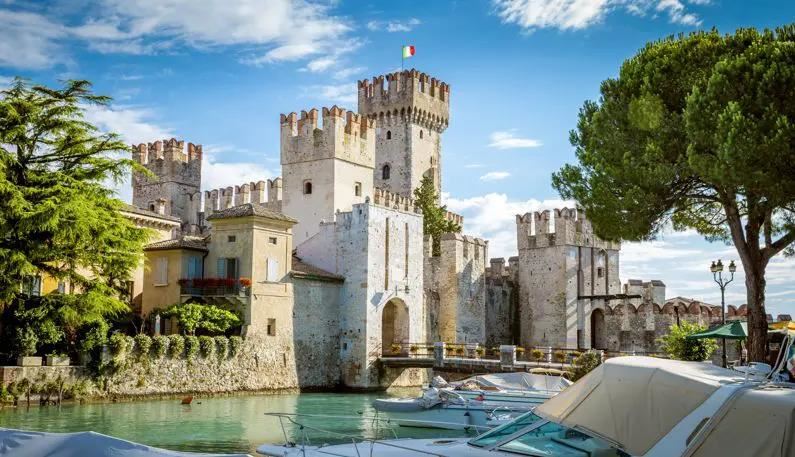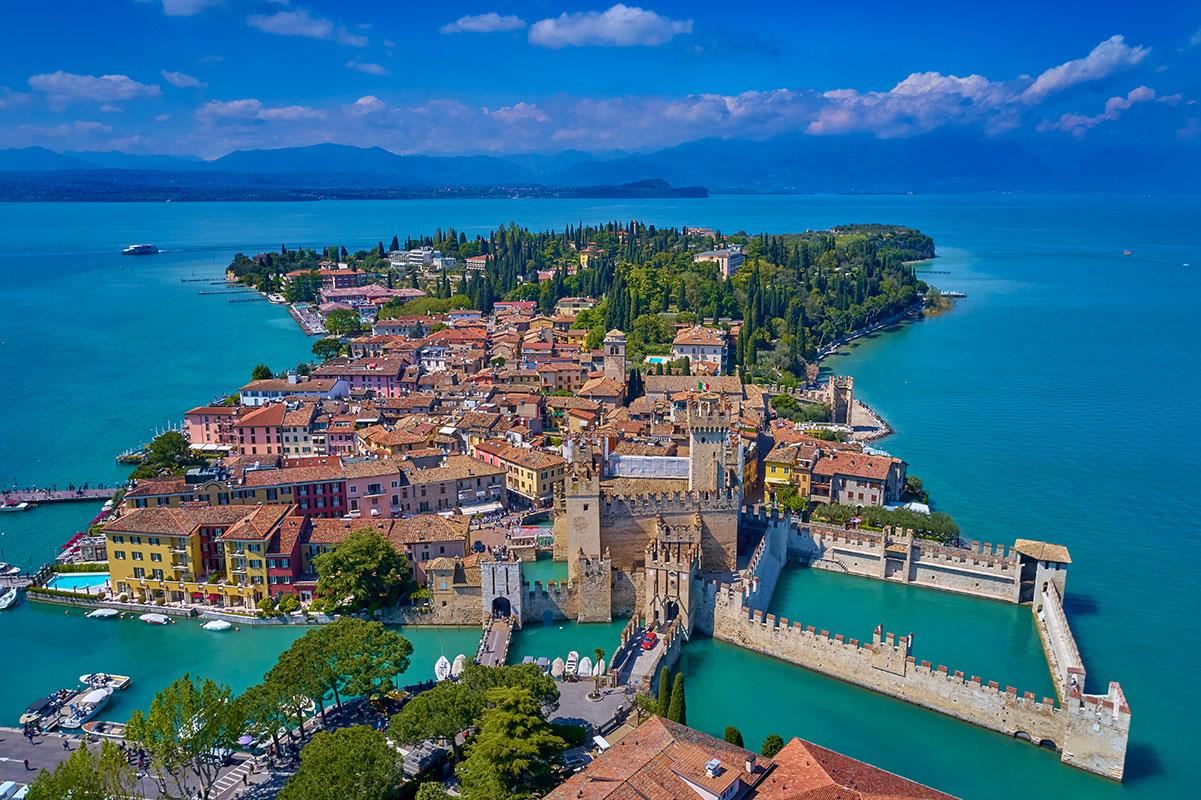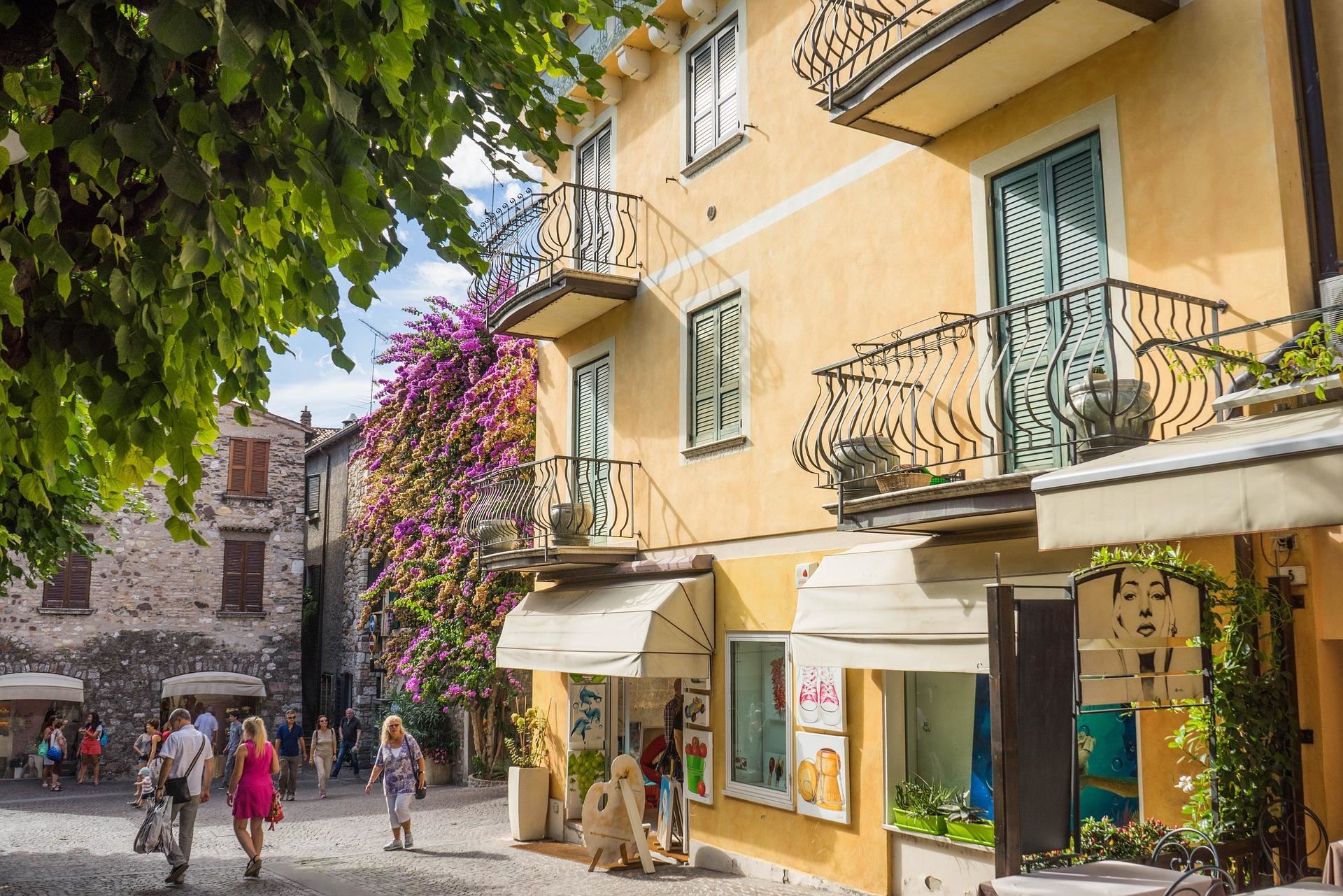4 days | 3 nights
Tour Destination
Number of days
Overview
Trip Summary
Day 1
- Sirmione
Day 2
- Verona
Day 3
- Arena di Verona
Day 4
- Check out at Hotel in Verona
-
Check in at Hotel
-
Sirmione
Sirmione is one of the best known and most visited places on Lake Garda, a peninsula about 4 km long and its heart, the historic village from the Scaliger castle to the Grottoes of Catullus, are a tangle of alleys and gardens and unique views on the lake.
Defined as “ La Perla del Garda ” is a jewel located on the shore of the lake, Sirmione charms tourists thanks to its historical taste and the typicality and charm that characterize. It is a country with a breathtaking landscape, alleys and promenades embellished with flowers and plants of all kinds, medieval buildings, trendy shops and luxurious restaurants. At the gates of the village, the visitor is screened immediately in a romantic and mysterious environment, enchanting him and making him fall in love like a mermaid singing to sailors.
Scaligero Castle of Sirmione
The Scaligero Castle, the best known symbol of Sirmione, welcomes the visitor by constituting the only entrance to the town. It is one of the best preserved Italian castles and one of the rare examples of lake fortification .
As the name suggests, the castle dates back to the Scala era , therefore linked to the most flourishing period of the city of verona. The construction of the castle began in the middle of the XIII century , most likely on previous Roman remains and its function was always exclusively defensive, of port control and prison.
The Grottoes of Catullus
The first settlements date back to the Bronze Age, of which traces of stilts remain, a place that later, in Roman times, became a holiday resort. In fact, on the extremity of the island, there is an ancient and precious Roman villa, called “ Le Grotte di Catullo “, with frescoes from the 1st and 2nd century AD inside, a nearby museum preserves finds. archaeological.
This imposing archaeological site, in addition to representing the most important evidence among the findings of the Roman period in the Sirmione area, is considered the most grandiose example of a Roman villa found in northern Italy. The name of “Grotte” dates back to the 15th century. when chroniclers-travelers discovered the existence of these collapsed “caverns” covered with vegetation.
Caio Valerio Catullo , born around 87 BC and died in 54 BC, he belonged to the rich Veronese family of the Valeri and certainly owned a residence in Sirmione, although it is not proven that his villa was located in this very place. The entire archaeological complex once covered approximately 20,000 km2.
The thermal baths of Aquaria
The Terme di Aquaria are very famous, thanks to the curative sulphurous waters that flow hot from the lake bed, which help heal problems related to the respiratory tract and skin diseases.
Sirmione boasts walks , enchanting beaches, such as the Lido delle Bionde where it is possible to lie down to sunbathe, and the ancient churches of S. somewhat secluded, and of S.Maria Maggiore in the heart of the town.
Crenellated walls dating back to medieval times protect the village and the Scaliger Castle , enclosing the historic center as an asset to hide and keep, in fact the latter is configured as an island since it is located at the northern end of a peninsula isolated by a navigable moat and the only access route is a bridge.
To the delight of pedestrians, the center is a restricted traffic area, anyone wishing to access it by car must be in possession of special permits granted strictly and at certain times.

-
Check out from Hotel
-
Check in at Hotel in Verona
Verona
Close to Garda Lake, Verona is a city of rare beauty, set back against the hills to the north and laid out harmoniously along the smooth curves of the Adige river. Founded as a commercial and political town in Roman times, traces of this period remain with the massive Arena, the Roman theatre, the Gavi Arch and the Borsari gate, as well as the archaeological area of Porta Leoni and that of the Scaligeri excavations. Large sections of the ancient walls are still standing and they bear witness – along with the monumental gates and other fortifications – to the strategic importance of the city.
Verona is also full of prestigious cultural institutions, from the ancient Civic Capitolare Library to the university and the oldest Music academy in the world. The Fondazione Arena has been producing stunning opera productions for its 15.000 capacity audience for over a hundred years, and every summer an international crowd packs the open-air theatre to cheer each performance.
-
Arena di Verona
Arena is the Roman amphitheater of Verona. It was built in the first century A.D. to witness gladiators fighting. It is the third Roman amphitheater in size among those still existing and is used in the summer for opera, concerts and events. It is the monument that most represents the city.
-
Aida
Aida is the princess of Ethiopia, daughter of King Amonasro. Currently the girl lives in disguise in Memphis as a slave to the Egyptians. She is the servant of Amneris, daughter of Pharaoh of Egypt. Both are secretly in love with the brave Egyptian warrior Radamès, who returns Aida’s love.

-
Check out at Hotel in Verona






